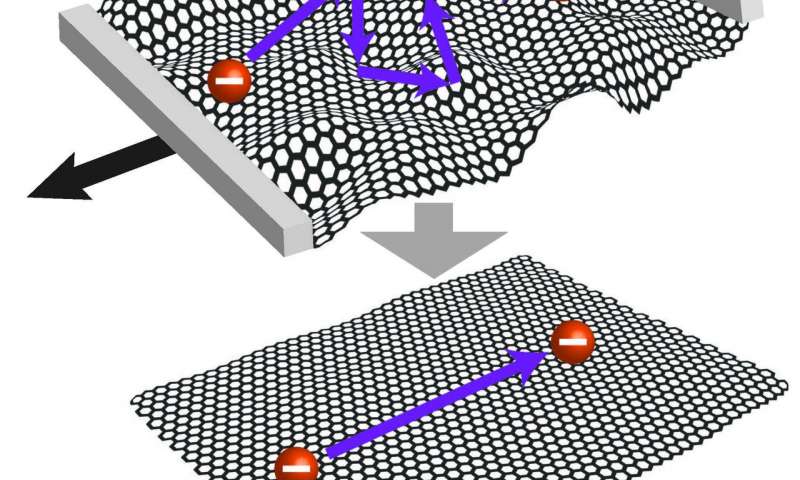The sample quality of graphene has been improved
significantly since its discovery. One factor that limited further
improvements has not been investigated directly so far, namely
corrugations in the graphene sheet, i.e. microscopic distortions
that form even when placed on atomically flat surfaces. Such
corrugations can scatter the electrons when moving through an
electronic device. Like bumps on a road that slow the pace of
travel, corrugations in graphene slow traveling electrons. After
flattening the corrugations, electrons move effectively faster
through a graphene sheet.
Flatter graphene, faster electrons: Technique flattens
corrugations in graphene layers to improve samples




